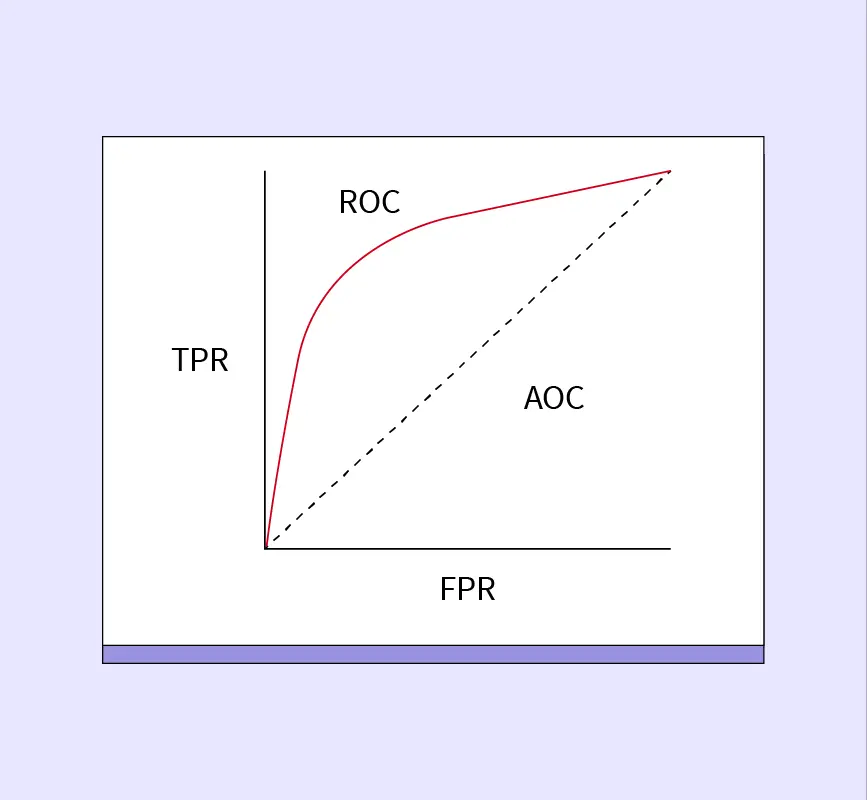The explosion of big data in recent years created a critical need for scalable, distributed storage systems capable of handling massive datasets efficiently. Hadoop Distributed File System (HDFS) emerged as a powerful solution, offering a fault-tolerant, scalable way to store and manage big data across clusters of inexpensive, commodity hardware.
What is HDFS?
HDFS stands for Hadoop Distributed File System, a core component of the Apache Hadoop ecosystem. It is a distributed storage system designed to store large volumes of structured, semi-structured, and unstructured data across clusters of machines. Unlike traditional file systems, HDFS splits files into blocks and distributes them across multiple nodes, ensuring scalability and reliability.
Within the Hadoop ecosystem, HDFS acts as the foundational storage layer, supporting other processing frameworks like MapReduce, Hive, and Pig. It enables efficient access to vast datasets, making big data processing feasible at scale.
The key objectives behind HDFS’s creation were to store massive datasets reliably, ensure fault tolerance despite hardware failures, and support high-throughput data access rather than low-latency access. By prioritizing scalability, resilience, and cost-effectiveness, HDFS revolutionized how organizations manage and analyze big data today.
Brief History and Evolution of HDFS
HDFS was developed in the early 2000s as part of the broader Apache Hadoop project, spearheaded by Doug Cutting and Mike Cafarella. Inspired by Google’s Google File System (GFS) paper, HDFS was designed to meet the growing demand for a scalable, fault-tolerant storage system capable of handling massive data volumes generated by web applications.
Initially adopted by internet giants like Yahoo! for big data processing, HDFS quickly became a cornerstone of the big data revolution. Its open-source nature, combined with scalability and resilience, made it the preferred storage backend for large-scale distributed computing environments.
Why HDFS is Critical in the Big Data World?
In the era of big data, organizations generate and collect data at unprecedented scales—from user logs and IoT sensor streams to social media interactions. Managing such massive data volumes requires a system that can store petabytes of information efficiently and cost-effectively.
HDFS addresses this need through its distributed storage architecture, breaking large files into blocks and distributing them across multiple nodes. Its built-in fault tolerance ensures that even if individual hardware components fail, data remains safe and accessible. HDFS empowers enterprises to handle big data workloads with scalability, resilience, and lower storage costs.
Key Advantages of Hadoop Distributed File System
- Fault Tolerance and High Availability: HDFS is inherently fault-tolerant by replicating each data block across multiple nodes (default replication factor is three). If a node fails, HDFS automatically accesses another replica, ensuring continuous data availability without manual intervention. This redundancy is crucial for maintaining uptime and data reliability in large, distributed environments.
- Scalability: HDFS offers seamless horizontal scalability. As data volumes grow, new nodes can simply be added to the cluster without disrupting existing storage. The system automatically balances and distributes data across the expanded infrastructure, making it easy to scale from terabytes to petabytes with minimal administrative overhead.
- Cost-Efficiency: Unlike traditional enterprise storage solutions, HDFS is designed to run on low-cost commodity hardware instead of expensive, specialized servers. This dramatically reduces the overall cost of ownership, allowing organizations to store and process massive datasets without incurring exorbitant infrastructure costs—perfect for budget-conscious big data projects.
- High Throughput for Large Data Sets: HDFS is optimized for batch processing rather than low-latency access. Its architecture prioritizes high-throughput data access, enabling faster read/write operations on large files. This makes it an ideal choice for workloads involving data mining, log processing, and scientific computing, where performance with massive datasets is critical.
Core Components of HDFS Architecture
1. NameNode
The NameNode is the master server of HDFS, responsible for managing the file system namespace. It maintains metadata like filenames, directory structure, file permissions, and the mapping of blocks to DataNodes. However, it does not store actual data—only the critical information needed to locate and manage data blocks efficiently across the distributed environment.
2. DataNode
DataNodes are the worker nodes that store the actual data blocks in HDFS. Each DataNode manages storage attached to the server it runs on and periodically sends heartbeats and block reports to the NameNode. If a DataNode fails, HDFS automatically redirects requests to another replica, maintaining fault tolerance and ensuring uninterrupted access to data.
3. Secondary NameNode
Despite its name, the Secondary NameNode is not a live backup of the NameNode.
Instead, it periodically connects to the NameNode to merge its edit logs with the filesystem image, creating a new checkpoint. This process prevents edit logs from growing indefinitely and helps speed up NameNode recovery during restarts.
4. HDFS Client
The HDFS Client provides the user interface for interacting with HDFS. Clients handle file read/write operations by communicating with the NameNode for metadata and with DataNodes for actual data transfer. Clients are lightweight and do not manage any storage themselves.
5. Block Storage Concept
In HDFS, large files are split into smaller fixed-size blocks (default: 128 MB). Each block is distributed across multiple DataNodes and replicated for fault tolerance. This block-based architecture enables parallel processing and efficient storage management across massive datasets.
How Does HDFS Work?
HDFS manages data storage and retrieval through a simple yet powerful flow optimized for distributed environments.
Write Operation Flow
When a user uploads a file to HDFS, the file is first split into fixed-size blocks (default 128 MB or 256 MB).
- The HDFS client contacts the NameNode to determine where blocks should be stored.
- The NameNode provides a list of DataNodes for block replication.
- The client then writes the blocks directly to the designated DataNodes, maintaining multiple replicas based on the set replication factor (commonly 3). This ensures fault tolerance and data redundancy across the cluster.
Read Operation Flow
When retrieving a file, the HDFS client requests the block locations from the NameNode.
- The NameNode responds with the addresses of DataNodes containing the blocks.
- The client then fetches the blocks directly from the nearest DataNode, minimizing network latency.
Replication and Fault Recovery
If a DataNode fails, the NameNode detects the missing blocks and automatically replicates them to other healthy nodes to maintain the desired replication level. This self-healing mechanism ensures high data availability without manual intervention.
Basic HDFS Commands and File Operations
Understanding HDFS file operations is essential for managing data efficiently within the system. Here are some of the most common HDFS commands:
Listing Directories and Files
Use the following command to list files and directories within a specified HDFS path:
hdfs dfs -ls /path/to/directoryIt displays file permissions, ownership, size, and modification timestamps, helping users verify the contents of directories.
Creating Directories
To create a new directory in HDFS, use:
hdfs dfs -mkdir /path/to/new_directoryYou can also create multiple nested directories using the -p option, ensuring that parent folders are automatically created if they don’t exist.
Copying Files to/from HDFS
Upload local files into HDFS:
hdfs dfs -put localfile.txt /hdfs/directory/Download files from HDFS to local storage:
hdfs dfs -get /hdfs/file.txt local_directory/Moving Files within HDFS
Move files from one HDFS location to another:
hdfs dfs -mv /source/path /destination/pathUseful for organizing and restructuring files across directories without needing to re-upload.
Checking Disk Usage
Monitor storage consumption:
hdfs dfs -du -h /pathThis displays disk usage for directories and files in a human-readable format (e.g., MB, GB).
Deleting Files/Directories
Remove files or directories from HDFS:
hdfs dfs -rm -r /path/to/deleteUse with caution, as deletions are permanent.
Installing and Accessing HDFS
HDFS is not a standalone tool—it is installed as part of the Apache Hadoop distribution. When you install Hadoop, HDFS components like the NameNode, DataNode, and HDFS client utilities are included automatically. Popular Hadoop distributions such as Apache Hadoop, Cloudera, and Hortonworks simplify the setup process with pre-configured packages and tools for cluster management.
Once installed, HDFS can be accessed using two main methods:
- Command-Line Interface (CLI): The most common way to interact with HDFS is through commands like hdfs dfs -put, -get, -ls, and more. These allow users to upload, retrieve, manage, and delete files directly from the shell.
- WebHDFS (REST API): For remote access and integration with applications, WebHDFS provides a RESTful API that allows users to read, write, and manage HDFS files over HTTP.
HDFS Example and Real-World Use Cases
HDFS powers many critical big data applications across industries due to its ability to handle vast, unstructured datasets efficiently.
- Social Media Data Analysis: Platforms like Facebook, Twitter, and LinkedIn generate massive streams of user activity data. HDFS stores this information—posts, likes, shares, and clicks—allowing data scientists to run large-scale sentiment analysis, recommendation systems, and behavior modeling.
- Log Data Storage for Large Websites: Major e-commerce and content platforms, such as Amazon and Netflix, use HDFS to store extensive server logs, transaction histories, and user activity trails. These logs are later analyzed for improving system performance, detecting anomalies, and enhancing customer experiences.
- IoT Sensor Data Aggregation: Industrial and smart city IoT deployments produce continuous sensor data streams (temperature, humidity, location, etc.). HDFS aggregates this high-velocity data cost-effectively, enabling real-time monitoring, predictive maintenance, and intelligent decision-making across sectors.
How HDFS Stores Data: Storage Mechanism Explained
HDFS follows a block-based storage model. Large files are divided into fixed-size blocks (default size: 128 MB or 256 MB), and these blocks are distributed across multiple DataNodes in the cluster. Each block is typically replicated three times to ensure fault tolerance and high availability.
The NameNode manages the metadata—it keeps track of which blocks belong to which files and where those blocks are located within the cluster. This separation between metadata and actual data storage allows HDFS to scale horizontally and efficiently recover from node failures without losing information.
Key Considerations and Challenges When Using HDFS
While HDFS is powerful, it has several limitations that organizations must consider:
- Small File Problem: HDFS is optimized for storing large files. Managing millions of tiny files can overwhelm the NameNode, degrading system performance.
- Single NameNode Bottleneck: The NameNode acts as a single point of failure (though high availability configurations exist). Its memory limits can constrain how many files and blocks a cluster can manage.
- Maintenance and Scaling Complexities: Adding or replacing nodes requires careful rebalancing. Maintaining data consistency, replication, and fault tolerance across a growing cluster demands significant administrative effort and expertise.
HDFS vs. Cloud Object Storage
While HDFS remains a preferred choice for on-premises big data deployments, cloud object storage services like Amazon S3, Azure Blob Storage, and Google Cloud Storage are reshaping the storage landscape.
Key Architectural Differences:
- HDFS uses block-based storage and relies on internal replication.
- Cloud storage is object-based, with built-in global redundancy.
Pros of HDFS:
- High control over infrastructure.
- Tight integration with traditional Hadoop ecosystems.
Cons of HDFS:
- Requires hardware maintenance.
- Limited elasticity compared to cloud services.
When to Prefer Cloud Storage: For organizations needing global accessibility, pay-as-you-go scalability, and reduced operational overhead, cloud object storage is often a better fit—especially for analytics, machine learning, and real-time applications at scale.
Reference:


